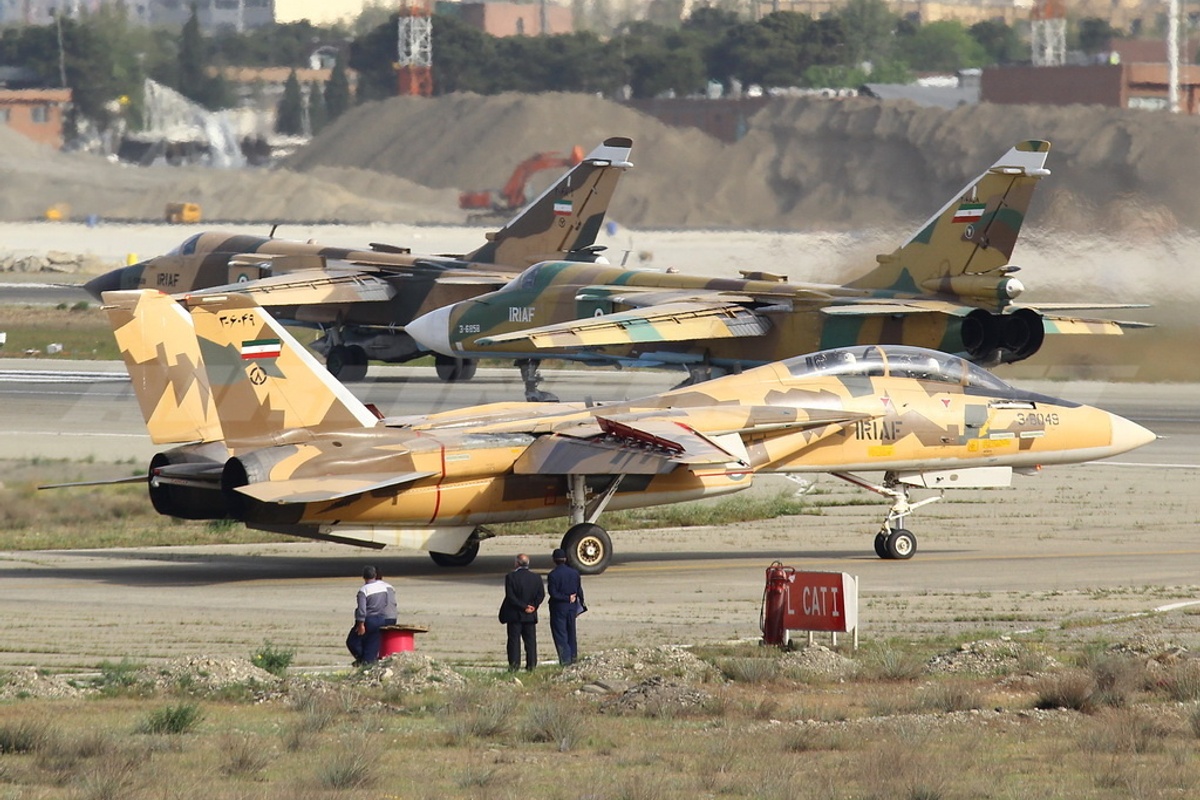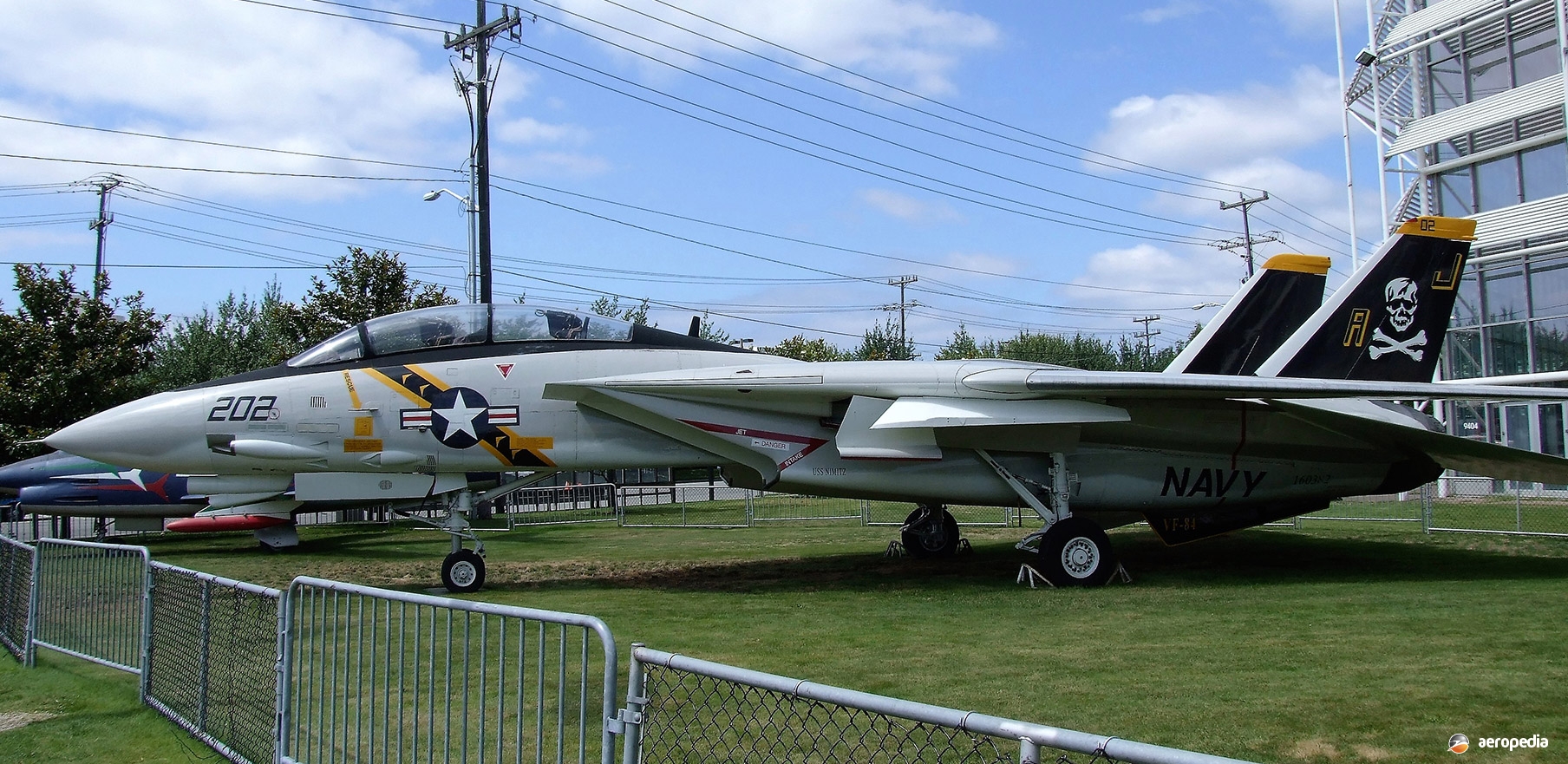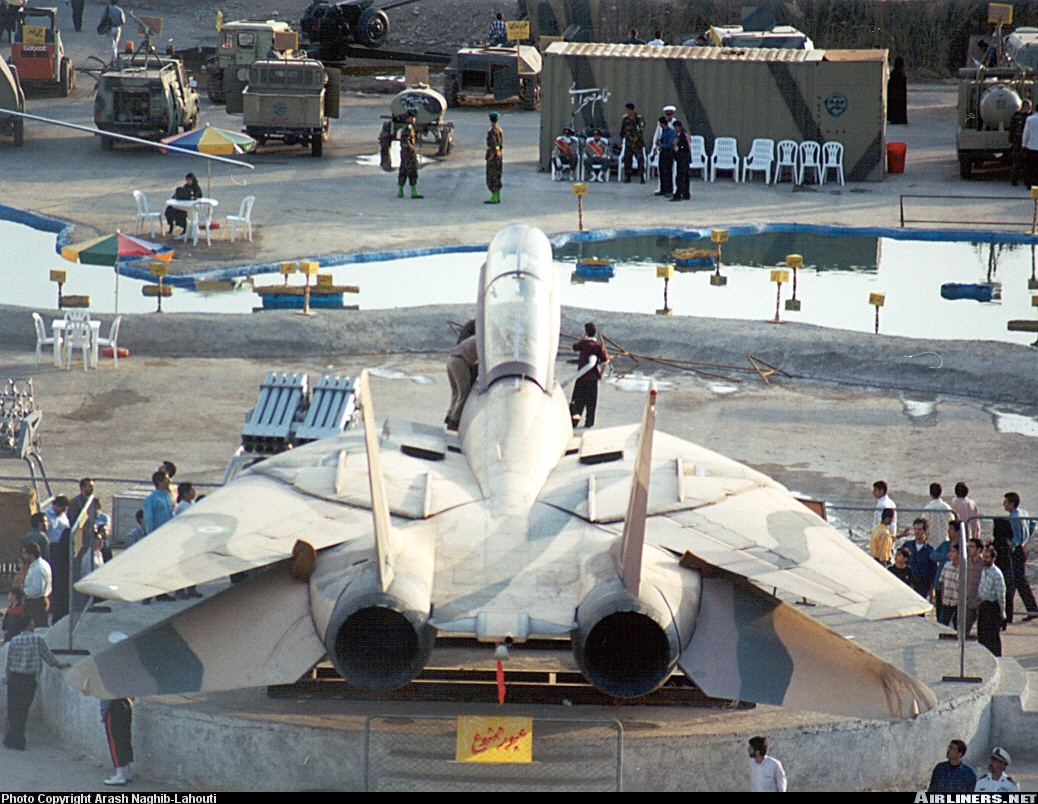Iran's F-14 Tomcat: An Enduring Legacy Of Cold War Might
Table of Contents
- The Genesis of a Legend: How Iran Acquired the F-14 Tomcat
- Mastering the Cat: Iranian Pilots and the F-14's Complex Systems
- The Tomcat in Combat: Iran-Iraq War and Beyond
- The Sanctions Era: Keeping the F-14 Tomcat Flying Against All Odds
- An Enduring Icon: The F-14 Tomcat's Longevity in Iranian Service
- The F-14 Tomcat's Role in Modern Iranian Air Defense
- A Legacy of American Engineering: The F-14's Unforeseen Journey
- Expert Perspectives on Iran's F-14 Tomcat Fleet
The Genesis of a Legend: How Iran Acquired the F-14 Tomcat
The story of the Grumman F-14 Tomcat in Iran begins in the early 1970s, a period when Iran, under Shah Mohammad Reza Pahlavi, was a key U.S. ally in the Middle East. The Shah harbored ambitions of building a powerful military, capable of projecting influence and defending vast oil interests. Facing a perceived threat from the Soviet Union and regional rivals, Iran sought the most advanced air defense capabilities available.A Strategic Imperative: Why the F-14 for Iran?
At the time, the F-14 Tomcat was the pinnacle of air superiority fighter technology, designed primarily for fleet defense for the U.S. Navy. Its formidable AN/AWG-9 radar and long-range AIM-54 Phoenix missile system offered unparalleled "stand-off" interception capabilities, allowing it to engage multiple targets at distances far beyond the reach of other fighters. This capability was precisely what Iran needed to counter potential incursions by Soviet bombers or other high-performance aircraft. In 1974, after evaluating various options, including the F-15 Eagle, Iran placed an order for 80 F-14A Tomcats and 714 AIM-54 Phoenix missiles under the "Peace Pegasus" program. This monumental deal, worth billions of dollars, was a clear indication of the strategic importance placed on the F-14 Tomcat for Iran's defense. The first Tomcats arrived in Iran in January 1976, marking the beginning of a unique chapter in aviation history. The decision to acquire the F-14 was seen as a critical step in bolstering Iran's air defense infrastructure, a decision whose wisdom would be confirmed in the crucible of war.Mastering the Cat: Iranian Pilots and the F-14's Complex Systems
The F-14 Tomcat was not just any fighter jet; it was a highly complex machine, requiring extensive training for its pilots and Radar Intercept Officers (RIO). The sophisticated avionics, the variable-sweep wing mechanism, and especially the revolutionary AN/AWG-9 radar and AIM-54 Phoenix missile system, demanded a new level of expertise. Iranian pilots and RIOs underwent rigorous training programs, both in the United States and within Iran, with assistance from American instructors and technicians. This training was intense, focusing on mastering the aircraft's intricate systems and maximizing its combat potential. One can imagine the immense pressure and challenge faced by these early crews. The command, "captain, I must give you an order that will challenge you and place a great burden on your shoulders, and the shoulders of your colleagues — master the tomcat and its weapons systems without delay," encapsulates the urgency and high stakes involved in preparing these elite units. The dedication of these early Iranian F-14 crews was paramount. They quickly became proficient in operating the Tomcat, absorbing the knowledge and skills necessary to leverage its unparalleled capabilities. This mastery would prove invaluable in the years to come, as the geopolitical landscape shifted dramatically.The Tomcat in Combat: Iran-Iraq War and Beyond
The true test of the F-14 Tomcat in Iranian service came with the outbreak of the Iran-Iraq War in September 1980, just a year and a half after the Iranian Revolution. The conflict plunged Iran into a desperate struggle, and its newly acquired, highly advanced F-14 fleet found itself on the front lines.Aerial Dominance: Key Engagements and Victories
Despite the immediate challenges posed by the revolution – including the departure of American technicians and the imposition of sanctions – the Iranian F-14s quickly proved their worth. Their performance during the war with Iraq confirmed Iran's decision to acquire them beyond any doubt. The F-14, with its long-range radar and Phoenix missiles, acted as an airborne early warning and control platform, guiding other Iranian fighters and engaging Iraqi aircraft from safe distances. The F-14 Tomcat achieved numerous air-to-air victories against Iraqi MiG-21s, MiG-23s, Su-22s, and Mirage F1s. Accounts from authors like Tom Cooper and Farzad Bishop, and Tom Cooper and Liam F., who have extensively researched the air war, highlight the F-14's decisive impact. Its ability to detect and track multiple targets simultaneously, coupled with the formidable reach of the AIM-54 Phoenix, instilled fear among Iraqi pilots. The sheer psychological effect of knowing an F-14 was patrolling the skies often deterred Iraqi aircraft from entering Iranian airspace. While precise numbers are debated, the F-14 is credited with the majority of Iran's air-to-air kills during the conflict, establishing its reputation as a formidable air superiority fighter.The Sanctions Era: Keeping the F-14 Tomcat Flying Against All Odds
The Iranian Revolution of 1979 dramatically altered Iran's relationship with the United States. Sanctions were imposed, cutting off the supply of spare parts, technical support, and new weapons systems. For a technologically advanced aircraft like the F-14 Tomcat, this was a catastrophic blow. Most analysts predicted that Iran's F-14 fleet would be grounded within a few years due to lack of maintenance and parts. However, Iran defied these predictions. Faced with an existential threat during the war with Iraq, and later with ongoing international isolation, Iran embarked on an ambitious and often clandestine program to keep its F-14s operational. This involved: * **Reverse Engineering:** Iranian engineers and technicians painstakingly reverse-engineered critical components, from complex avionics boards to hydraulic pumps and engine parts. This required immense ingenuity and resourcefulness, often working with limited resources and outdated blueprints. * **Cannibalization:** Many F-14s were "cannibalized," meaning parts were stripped from non-operational aircraft to keep others flying. This was a common practice, albeit one that gradually reduced the overall size of the active fleet. * **Smuggling Networks:** Iran reportedly established covert networks to acquire spare parts on the international black market, often through third-party countries. This was a risky and expensive endeavor, but essential for maintaining the fleet. * **Indigenous Production:** Over time, Iran developed the capability to manufacture some F-14 components domestically, a testament to its growing aerospace industry and the dedication of its workforce. This includes parts for the TF30 engines, radar components, and various structural elements. The sheer determination to maintain the F-14 Tomcat fleet in operational condition despite decades of sanctions is a remarkable story of national resilience and engineering prowess. It highlights Iran's commitment to its air defense capabilities, even when faced with seemingly insurmountable obstacles.An Enduring Icon: The F-14 Tomcat's Longevity in Iranian Service
While the U.S. Navy retired its last F-14 Tomcats in 2006, replacing them with the F/A-18E/F Super Hornet, the F-14 Tomcat remains in active service with Iran. This longevity is truly extraordinary, especially considering the challenges Iran has faced.The Maintenance Marvel: Iran's Self-Sufficiency
Even so, the tomcat’s endurance in Iranian service, almost 50 years since it was first delivered, is a testament to the lengths Iran has gone to preserve one of the most advanced fighters of its time. This isn't just about keeping them flying; it's about maintaining a complex, high-performance aircraft that was designed with a sophisticated logistical support chain in mind. Iran's success can be attributed to several factors: * **Skilled Technicians:** Decades of experience have created a highly skilled pool of Iranian technicians and engineers who understand the F-14 inside out. They have developed innovative solutions to repair and maintain the aircraft, often improvising when original parts are unavailable. * **Reverse Engineering Success:** The ongoing success of reverse engineering and indigenous production programs has allowed Iran to replace worn-out components and even upgrade some systems. * **Strategic Importance:** The F-14 Tomcat remains a critical asset for Iran's air defense. Its long-range radar and ability to carry heavy weapon loads make it indispensable for patrolling Iran's vast airspace and maritime borders. This strategic importance ensures continued investment in its maintenance. * **Upgrades and Modernization:** While detailed information is scarce, Iran has reportedly undertaken some modernization efforts for its F-14 fleet, including integrating newer, domestically produced air-to-air missiles (such as the Fakour-90, which is believed to be a reverse-engineered or locally improved version of the Phoenix) and potentially updating avionics. These upgrades aim to keep the aircraft relevant in a modern threat environment. The continued operation of the F-14 Tomcat in Iran is a unique case study in military self-sufficiency and perseverance against overwhelming odds. It demonstrates that with enough determination and ingenuity, even the most complex foreign-supplied military hardware can be kept operational for decades.The F-14 Tomcat's Role in Modern Iranian Air Defense
Today, the F-14 Tomcat remains a cornerstone of the Islamic Republic of Iran Air Force (IRIAF). While its numbers are significantly reduced from the original delivery, and its technology is undeniably dated compared to fifth-generation fighters, its capabilities still make it a formidable component of Iran's air defense network. Its primary role continues to be long-range interception and air superiority. The F-14's powerful radar, even if not fully modernized to Western standards, still provides a significant advantage in detecting and tracking targets at long distances, allowing it to act as a crucial command and control node for other Iranian interceptors. The ability to carry a significant payload of air-to-air missiles, particularly the long-range Fakour-90, means it can still pose a threat to potential aggressors. The F-14 Tomcat in Iran also serves a vital psychological and symbolic role. It represents Iran's ability to maintain complex military hardware despite sanctions and its refusal to be intimidated. It is a symbol of national pride and resilience, showcasing Iran's indigenous capabilities in aviation maintenance and engineering.A Legacy of American Engineering: The F-14's Unforeseen Journey
The Grumman F-14 Tomcat was a product of peak American aerospace engineering, designed for carrier-based operations from 1974 to 2006 for the U.S. Navy. Its design was revolutionary, featuring the iconic variable-sweep wings, twin engines, and a two-person crew. It was built for speed, agility, and the ability to dominate the skies.The Unforeseen Evolution: Adapting the F-14 for New Roles
The F-14's journey in Iran is an unforeseen evolution of this American engineering legacy. While it was designed for one purpose and environment (U.S. Navy carrier operations), it has been adapted to a completely different one (land-based air defense in Iran) under extreme circumstances. This adaptation speaks volumes about the inherent robustness and fundamental quality of the original design. Despite the lack of manufacturer support, the F-14's robust airframe and adaptable systems have allowed Iranian engineers to keep it flying. This includes not only maintaining its primary interception role but potentially exploring other capabilities, such as limited ground-attack roles, although its primary strength remains air-to-air combat. The fact that an aircraft designed in the 1960s and first delivered in the 1970s can still be a relevant part of a nation's air force in the 2020s, without original factory support, is a powerful testament to the original Grumman design.Expert Perspectives on Iran's F-14 Tomcat Fleet
Aviation historians and military analysts have long been fascinated by the story of the Grumman F-14 Tomcat in Iran. Experts like Tom Cooper, often collaborating with researchers such as Farzad Bishop and Liam F., have dedicated significant effort to documenting the F-14's operational history in Iran, particularly during the Iran-Iraq War. Their detailed accounts, often based on interviews with former pilots and extensive research, provide invaluable insights into the aircraft's performance and the challenges faced by the Iranian air force. These experts generally agree that the F-14 was a game-changer for Iran during the war, giving them a crucial technological edge in air-to-air combat. They acknowledge the incredible ingenuity and perseverance demonstrated by Iran in keeping the fleet operational under sanctions. As one might infer from their collective work, "They're both very good, and they have" contributed immensely to our understanding of this unique situation. While the exact operational status and combat readiness of the remaining Iranian F-14s are subject to speculation and often classified, the consensus among these specialists is that the aircraft continues to be a vital, albeit aging, asset for Iran's air defense. Its continued service stands as a remarkable chapter in the history of military aviation, a story of adaptation, defiance, and the enduring power of a truly exceptional aircraft.Conclusion
The story of the Grumman F-14 Tomcat in Iran is a compelling narrative of technological resilience, national determination, and the unpredictable twists of geopolitical history. From its initial acquisition as a symbol of a strong alliance to its transformation into a cornerstone of an isolated nation's defense, the F-14 Tomcat has served Iran for nearly half a century. Its continued operation, despite decades of crippling sanctions and a complete lack of manufacturer support, is a testament to the ingenuity and dedication of Iranian engineers and technicians. The F-14 Tomcat in Iran is more than just an old warplane; it is a living monument to human perseverance and the ability to adapt under extreme pressure. It reminds us that even the most advanced technology can find an unexpected second life when necessity dictates. As the roar of its TF30 engines continues to echo across the Iranian skies, the Grumman F-14 Tomcat remains a unique and enduring symbol of both American engineering prowess and Iranian self-reliance. What are your thoughts on the incredible longevity of the F-14 Tomcat in Iranian service? Share your insights and perspectives in the comments below, and don't forget to share this fascinating story with fellow aviation enthusiasts!- When Did Persia Become Iran
- Iran Vs Israel Hudson
- Iran National Football
- News Israel Vs Iran
- Noticias Iran Vs Israel

Grumman F-14AM Tomcat - Iran - Air Force | Aviation Photo #2239264

Grumman F-14 Tomcat · The Encyclopedia of Aircraft David C. Eyre

Grumman F-14A Tomcat - Iran - Air Force | Aviation Photo #0253671